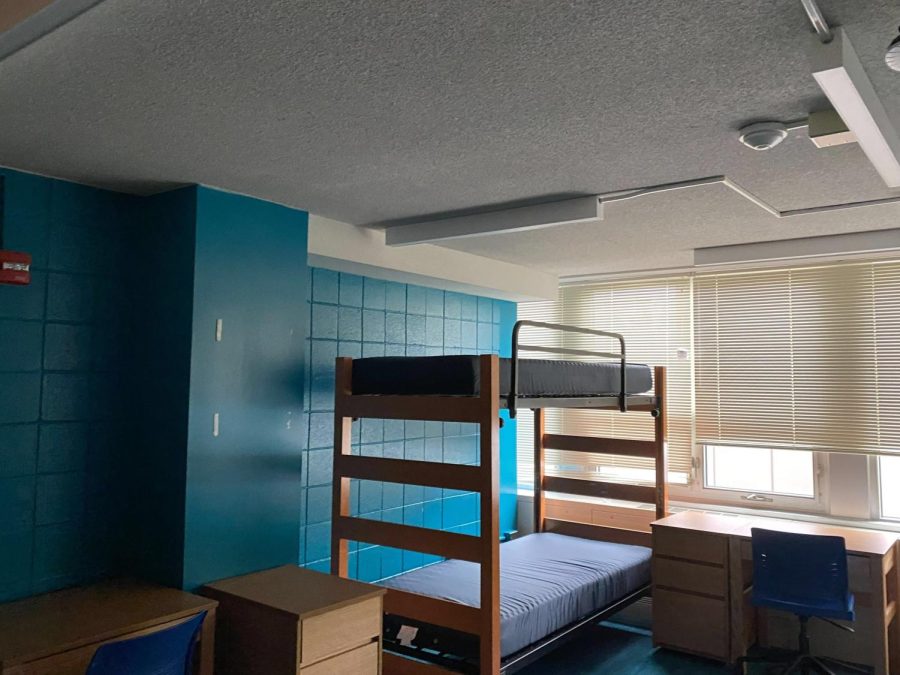University holds students in temporary housing
An empty student lounge in ISR that has been utilized for temporary housing when permanent housing was at maximum capacity.
Feb 16, 2022
Students are still living in lounges during the spring semester because the University ran out of places to house them.
“This semester, because our occupancy is so high, almost 100%, we had a larger number than anticipated, students choosing to come for the spring semester,” said Alma Sealine, executive director of University Housing.
According to Sealine, when the incoming class is larger than anticipated, the University puts students in lounge spaces converted to temporary housing.
“We’ve had record enrollment this fall and spring as students return to campus from COVID-19 to fulfill the campus live-on requirement,” said Mari Anne Curry, director of Housing Information and Marketing, in an email.
According to Curry, the University also set aside some rooms for quarantine and isolation housing the past two years which has impacted the permanent spaces available.
Get The Daily Illini in your inbox!
“Once space becomes available, because individuals don’t show up, or they choose to go somewhere else, then we move them into permanent housing,” Sealine said.
Sealine said ISR is considered a preferred temporary housing location. In the fall semester, all of the lounges were used in Townsend and Wardall.
According to Sealine, there are two different kinds of temporary housing spaces — preferred and non-preferred. Preferred lounge spaces have windows while non-preferred lounge spaces do not.
“Students who are assigned to temporary housing pay 50% of their total cost for room and board,” Sealine said.
When the student moves to permanent housing, the price is switched to the full cost.
“The lounge spaces accommodate four to six individuals, depending upon the size of the lounge,” Sealine said.
But sometimes there are two people staying in a lounge.
The students can decide how to configure their lounge space and move furniture around.
“Some of our students get very creative with how that’s all played out,” Sealine said.
Demia Simon, freshman in General Studies, lived in a temporary residence hall in ISR at the beginning of the fall semester.
A few months before coming to campus, she got an email saying that she would be in temporary housing.
According to Simon, she surprisingly enjoyed the experience.
“I thought it was going to be bad at first because it was a lounge,” Simon said.
According to Simon, living in a lounge didn’t feel like the standard University Housing experience because of all the space. Simon had one other roommate and then eventually two roommates.
“It’s probably two and a half rooms of a regular dorm,” Simon said. “It’s not as cozy, it’s open space … it doesn’t really feel like a home.”
According to Sealine, individuals are picked for temporary housing depending on when they decide to apply for housing. These students would have applied later, when there is no more available space for permanent housing.
When there was a permanent housing residence available, the University sent Simon an email with a deadline for her move-out date.
“They gave a number for a move-in service, we didn’t have to pay for the service,” Simon said. “We just call them, set a date and everything and they could come to get our stuff and take it over there. We just have to get there ourselves.”
According to Sealine, there are about 300 spaces available for temporary housing.






